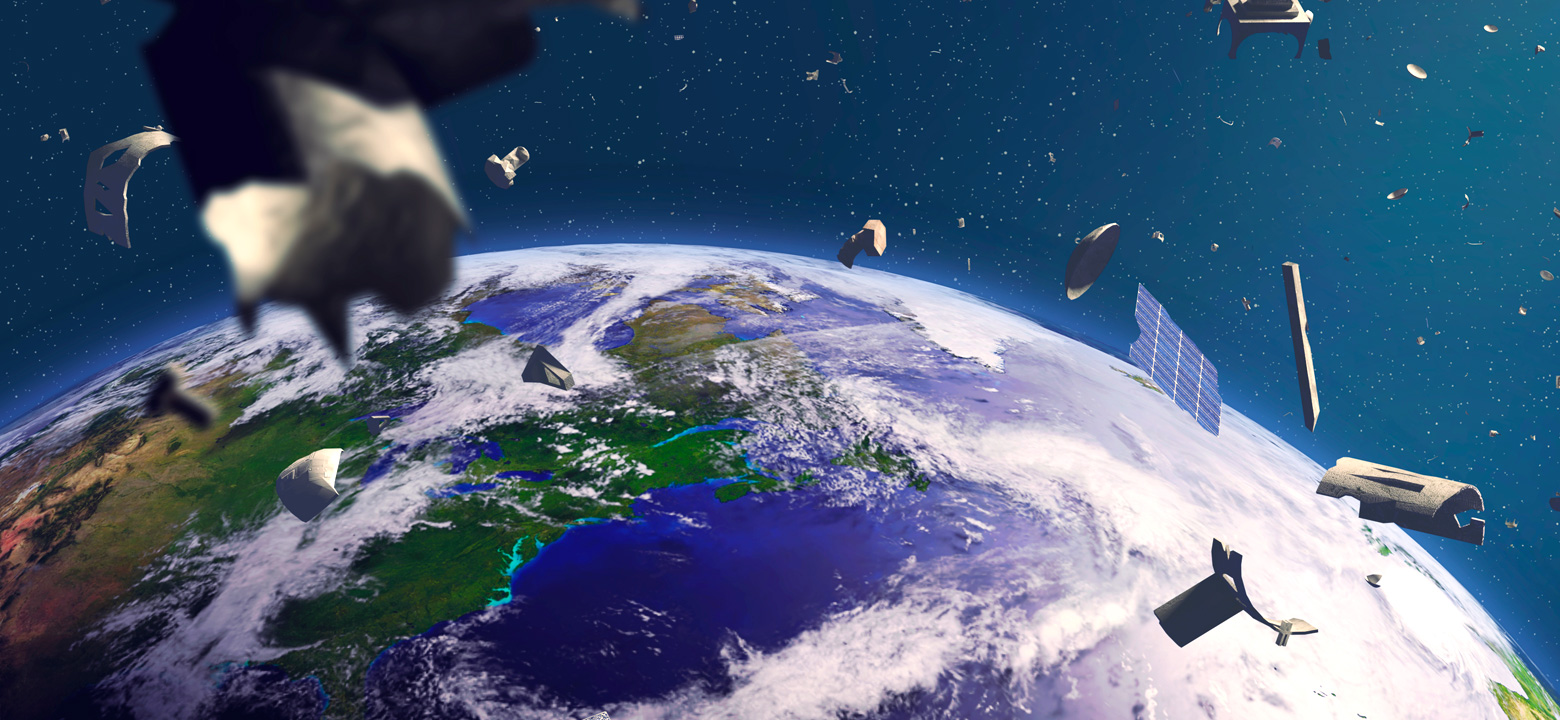
As vast as space is, it's starting to get crowded—especially the area around Earth. Decades of space travel, satellite launches, and aerospace research has left a belt of debris orbiting the planet. For most of humanity's time exploring space, equipment wasn't designed to be demisable—dead satellites stayed in orbit, and used rocket stages were left to float unless they ended up pulled into a destructive orbit and burned up.
While it'll be fascinating from an anthropological perspective in a couple hundred years, space debris presents a clear danger now. Floating detritus is unpredictable, and can collide with satellites and spacecraft. Not only does this jeopardize very expensive, important pieces of equipment, it could spell absolute disaster for manned missions. There's a phenomenon called Kessler Syndrome, put forth in 1978 by astrophysicist Don Kessler, which indicates that one collision could lead to multiple others. Think of it almost like a pile-up on the highway—one car strikes another, which pushes it into another, and so forth. Only, in this case, the cars are dead satellites, spacecraft, and washing machine-sized chunks of space junk traveling at extremely high speeds.
Space exploration has being going on for about 60 years. In that time, humanity has sent up 5,500 launches. There have been almost 10,000 satellites sent up around Earth, too, and that number is steadily increasing. Of those 10,000 satellites, a little more than half are still up there. A little less than half of those are still functioning. As a result, there are at least 23,000 objects floating freely in low-Earth orbit that are larger than a softball. We say “at least,” because those are the only ones that can be tracked—there are millions of smaller pieces that can't. Considering how fast things move in space, even a tiny object can be trouble. For this reason, it's imperative to remove as much of this debris as possible.
The European Space Agency (ESA) recently finalized the details to launch a space-cleaning mission in 2025. Swiss aerospace startup ClearSpace created the ClearSpace-1 mission, which will entail going into space, capturing a piece of debris roughly the size of a clothes dryer, and pulling it back into Earth's atmosphere where it can burn up on re-entry. This debris is the remains of the Vega Secondary Payload Adapter, a piece of equipment that joined one of the ESA's Vega rockets to two satellites launched in 2013.
For this mission, capturing space debris will be a bit like playing with a very high-stakes claw machine. Grabbing the derelict object will involve using a large claw, almost like a set of metal tentacles, to grab it and hold it as it's brought down. There are a few advantages and disadvantages to this approach: While using a claw means getting up close to an object and is more finicky than an option with a broader reach, like a net, it also leaves more room for error.
The claw itself is only part of the picture, though. Tracking debris through space is a challenge, especially if its small. There's often no way to know exactly what it is until it's directly observed. That's why the next step is to develop imaging tech that can spot debris and characterize it before the claw moves in for the catch. The ClearSpace-1 craft is set to launch on a Vega-C rocket in 2025, undergo testing in a 500-kilometer orbit, move to its target orbit to complete the mission, then drag its target into a low enough orbit to burn up in the atmosphere.
Of course, prevention is always superior to a cure. Even if ClearSpace is successful in their attempts to clean up space debris, it still involves the expense and environmental impact of sending their equipment into space. That's why the ESA has been researching demisable materials and construction methods that increase the odds of space debris burning up on re-entry.
While ClearSpace will be the first to demonstrate their capabilities on an actual piece of space debris, other companies have been working on their own approaches using space junk they've created themselves. In 2018, the University of Surrey tested a method using a harpoon and a net on small targets they deployed. In March of 2021, the Japanese company Astroscale plans to send up a craft equipped with a magnetic docking plate and use that to capture metallic debris.
Whichever technology ends up proving the most effective for capturing space debris, one thing is for certain: We need to move quickly. Humanity's reliance on satellite technology is growing, aerospace companies are launching constellations of new satellites on a regular basis, and some businesses plan to open space travel up to the civilian market. Developing more easily demisable space equipment and effective ways of removing old junk from low-Earth orbit are the only ways space travel and research can continue safely.